Spain’s turbulent history has resulted in a multitude of hilltop fortresses ranging from extravagant fairytale-like palatial palaces to oppressive military fortresses and, of course, the architectural delights of the Moorish Alcazars.
With roughly 2,500 castles to explore, whether they stand in near-perfect preservation or are now just atmospheric ruins, here are some of the best castles in Spain that you must see.
Disclaimer: This post contains affiliate links. This means that should you click on certain links and then subsequently purchase a product, I will receive a small commission.
Map of Castles in Spain

42 Famous Spanish Castles to Visit
1. Alcazar de los Reyes Cristianos

This Medieval fortress, otherwise known as the Alcázar of Córdoba, was where the Catholic Monarchs Fernando and Isabel first met with Christopher Columbus to discuss his first trip to America.
Today the interior has displays of Roman mosaics, but the real gem is the exterior of terraced gardens with ponds, fountains, orange trees, topiary, and flowers.
Where: Cordoba
When: 13th century
Open for visit: Yes. Check here for more information.
Click here to buy your skip-the-line guided tour and ticket.
2. Alcazar of Segovia
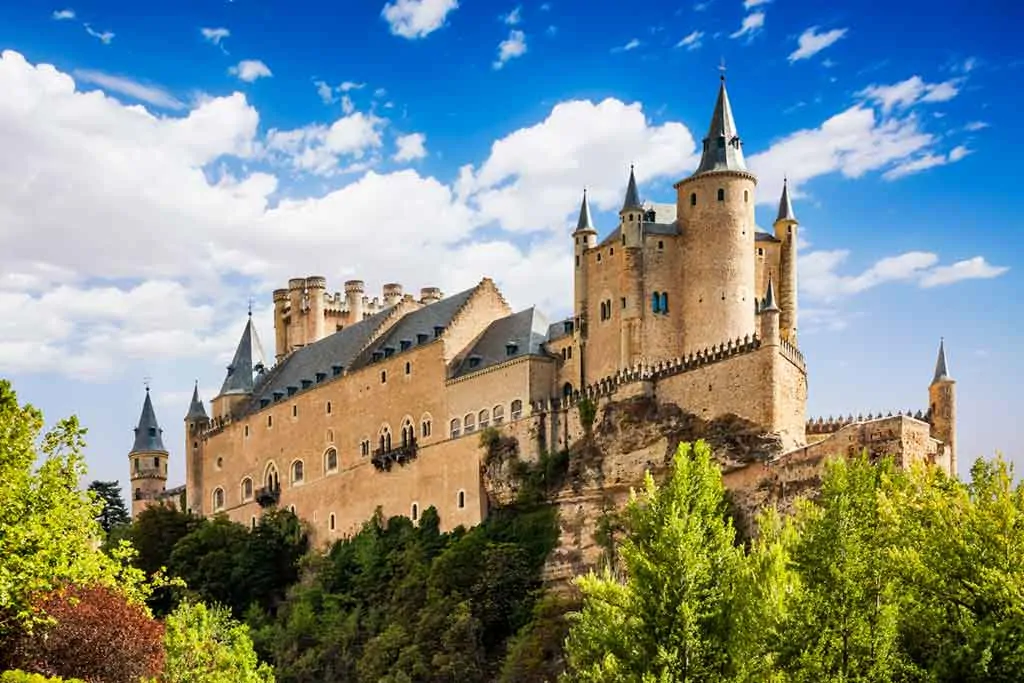
This UNESCO World Heritage Site is one of the most distinctive castle palaces in the whole of Spain due to it being shaped like the bow of a boat and was the real-life inspiration for Snow White’s castle.
Visit the Hall of Ajimeces with its collection of artwork, the Hall of Kings, and the Hall of the Throne before getting snap-happy photographing the stunning exterior.
Where: Segovia
When: 13th century
Open for visit: Yes, check here for more information.
3. Alhambra
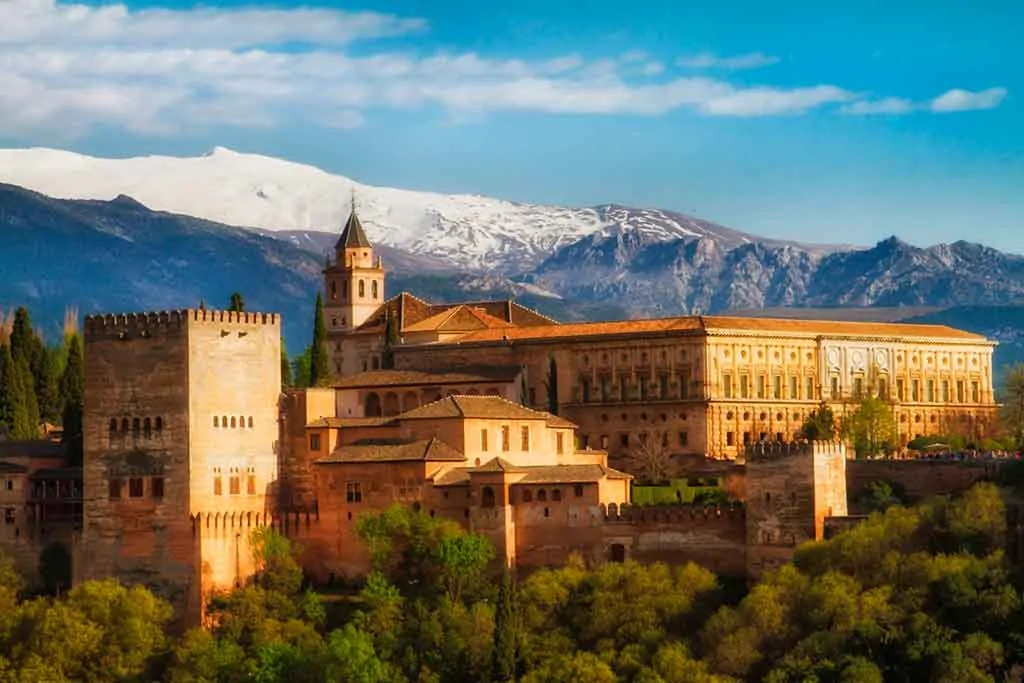
This sprawling palace/fortress complex is said to be one of the most magnificent buildings in the world, and when you step inside and see the Moorish architecture and courtyards, you’ll understand why.
A residence for royalty from the 13th century, the Alhambra became a Christian court in 1492 but later, during the 18th century, was abandoned. Be sure to understand the history before or during your visit to truly get the most from a visit.
Where: Granada
When: 9th-13th century
Open for visit: Yes, check here for more information.
Please note tickets to the Nasrid Palaces sell out months in advance, and booking a skip-the-line ticket or a guided tour is recommended.
Click here to book your skip-the-line guided tour with Nasrid Palaces.
Alternatively, you can buy a skip the line ticket to the Nasrid Palaces & Generalife with Audioguide.
4. Aljaferia Palace

This Islamic palace date back to medieval times and was used as a defense as well as a place of recreation; today is the headquarters of the Aragonese Parliament.
Explore the striking interior of the rooms with their coffered ceilings and Moorish-style arches before admiring the Church of Saint Martin, The Mosque, and the beautiful Courtyard of Saint Isabella.
Where: Zaragoza
When: 11th century
Open for visit: Yes, check here for more information.
5. Atalaya Castle
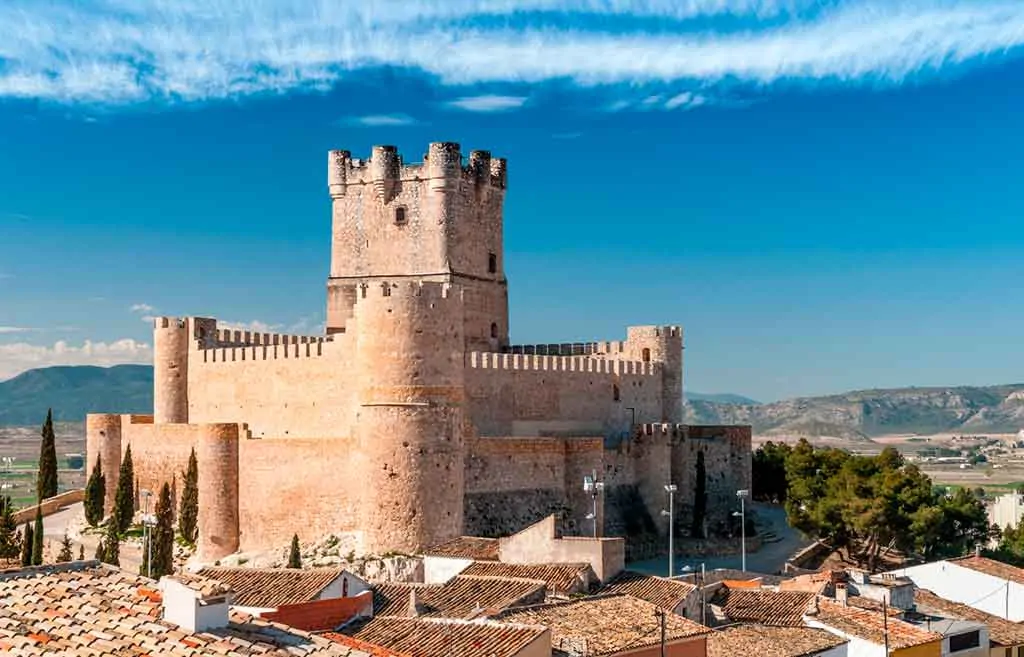
Otherwise known as Castillo de la Atalaya or Castillo de Villena, this military castle was an important stronghold on the Northern frontier of the Islamic Emirate of Iberia. It withstood three sieges led by James I of Aragon.
Unique to Hispanic military architecture due to its star-shaped ribbed vault, the ruins of Atalaya Castle can be visited today.
Where: Villena, Alicante
When: 12th century
Open for visit: Yes. Check here for more information.
6. Castillo de Belmonte

Built on top of a medieval fortress as a private residence for D. Juan Pacheco, the Marquis of Villena, Castillo de Belmonte has been owned by the same family since 1465 and has a certain French air about it due to the tastes of one of the owners; Eugenia de Montijo, Empress of France.
Combining Moorish and Neo-Gothic architecture, the restored castle is now a museum and cultural center where many events take place but visitors can also see the preserved rooms and visit the church.
Where: Belmonte, Cuenca
When: 15th century
Open for visit: Open check here for more information.
7. Castillo de San Juan Bautista
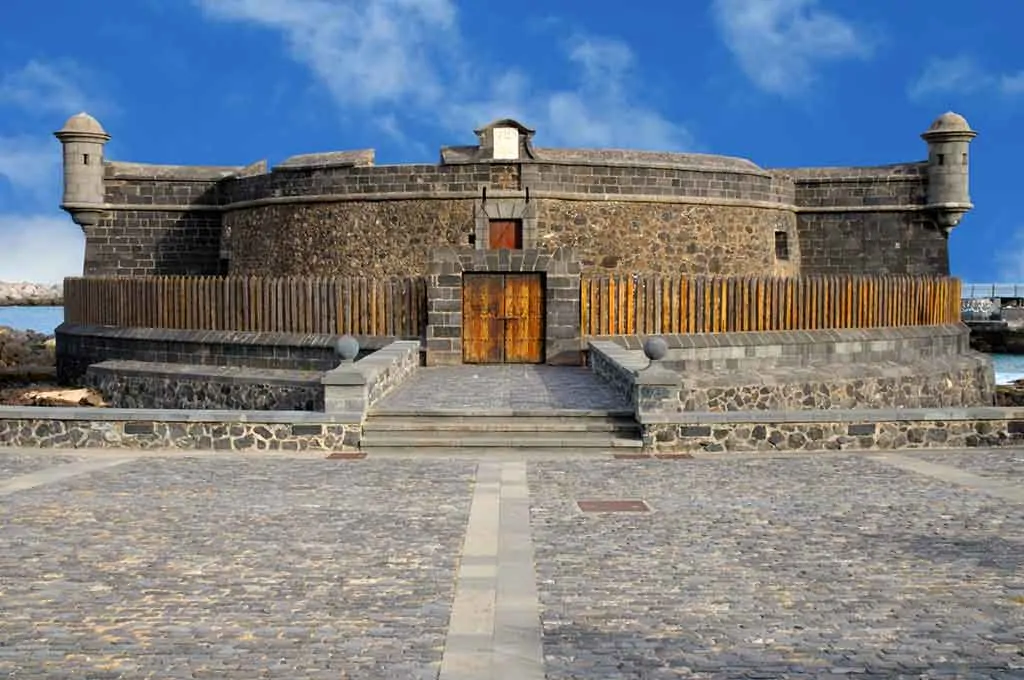
The Castle of St John the Baptist, better known as the Castillo Negro or the Black Castle, was the second most important military fort in the defense of Santa Cruz de Tenerife.
Round in shape and located on the seafront, today it is considered Tenerife’s best-preserved castle and a true piece of Spanish Historical Heritage. Despite not being open to the public, you can still enjoy the exterior and views out to sea.
Where: Santa Cruz, Tenerife
When: 17th century
Open for visit: Exterior only.
8. Castle of Alarcon

This impressive castle with its distinctive keep is enclosed within fortified Medieval town walls, making it the true heart of the old town.
A place of utmost beauty due to its steep gorges with the river Jucar flowing below, exploring the exterior of the Castle of Alarcon with its towers is like stepping back in time.
The castle itself is a hotel now, part of the Parador chain, but you can still see inside, without booking a room, by visiting the restaurant.
Where: Alarcon, Cuenca
When: 8th century
Open for visit: Hotel guests/restaurant access only. Check here for more information.
9. Castle of Almansa
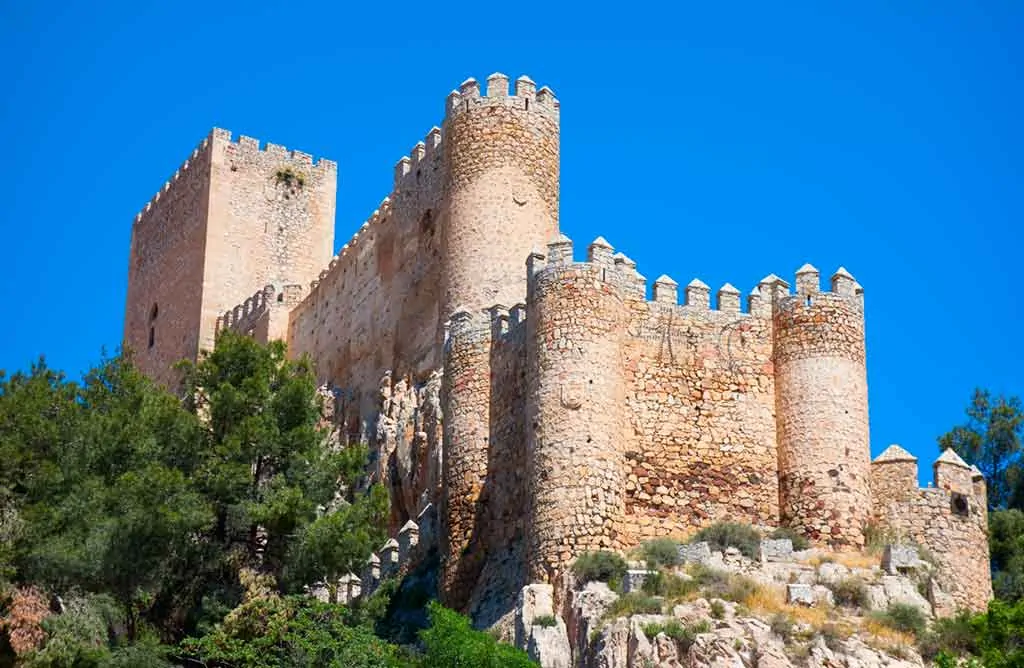
One of the best-preserved castles in the province of Albacete, the Castle of Almansa rises steeply above the white-washed houses of the town, giving visitors stunning views from street level and across the town.
The castle is divided into two enclosures at two levels which are joined by a stunning spiral staircase carved into the rock and has a central keep.
Where: Almansa, Albacete
When: 14th-15th century
Open for visit: Check here for more information.
10. Castle of Cardona
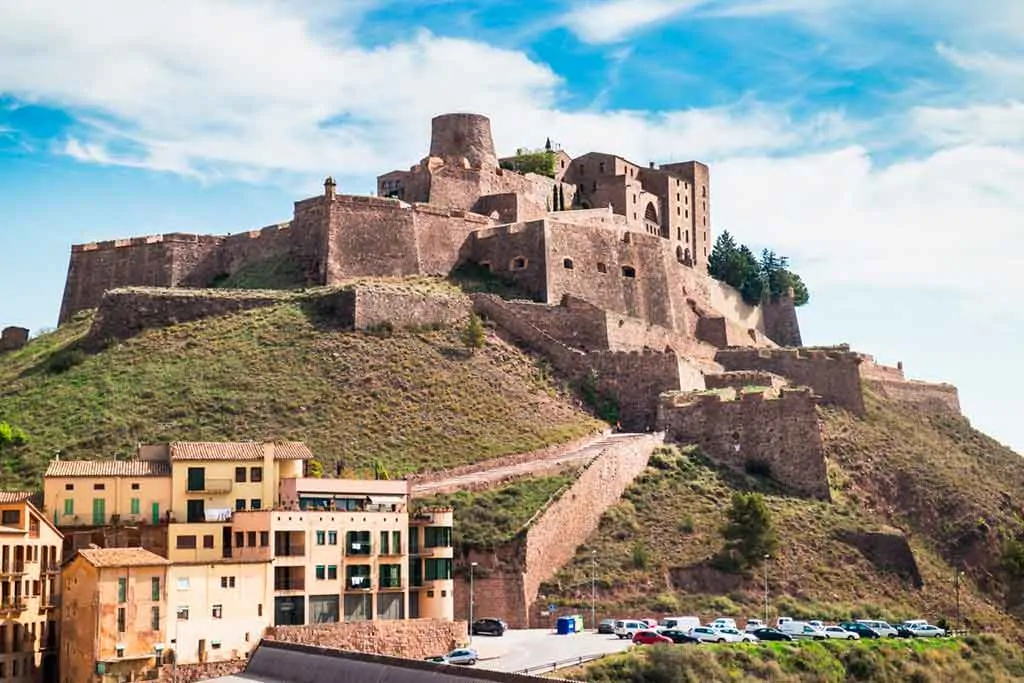
The most important medieval fortress in Catalonia, the strategically placed hilltop Castle of Cardona, was the last resistance in the War of the Spanish Succession.
Divided into the stately Dukes Pavilion and the canonry of Sant Vicenç (which is one of the best examples of early Catalan Romanesque architecture), visitors to Cardona Castle can choose between a thematic, dramatized, or general guided tour of the castle or spend the night as part of the castle is owned by the Parador hotel group.
Where: Cardona, Barcelona
When: 9th century
Open for visit: Yes. Check here for more information.
Click here to book your guided tour of Cardona Castle.
11. Castle of San Servando
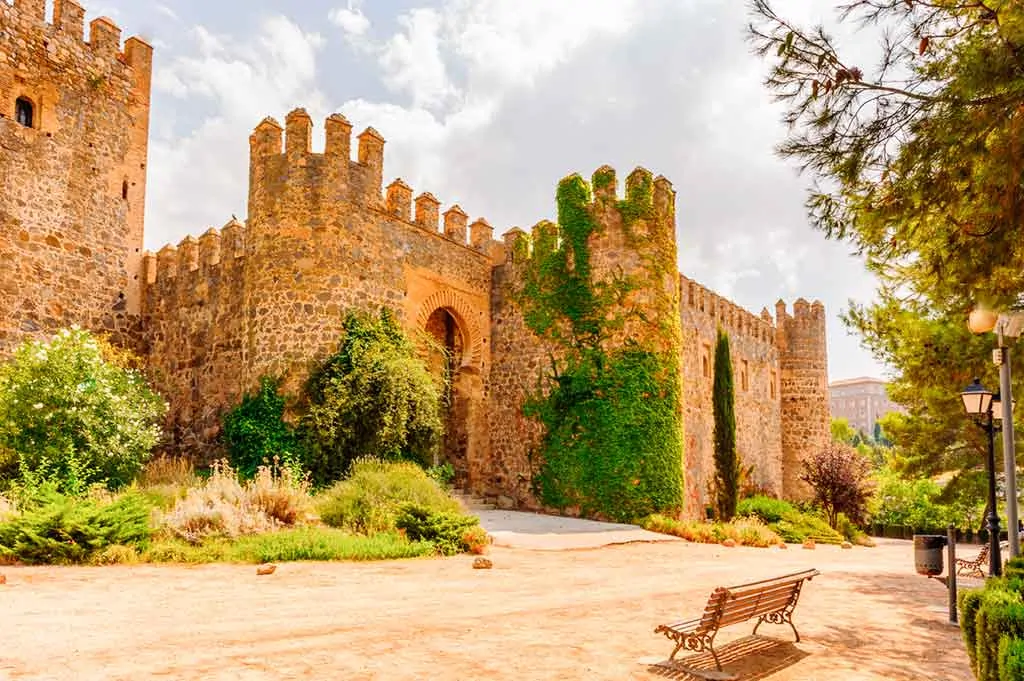
This castle was originally built as a Visigothic monastery, later turned into an Arab castle and eventually used by the Knights Templar, who turned it into a fortress. Today the Castle of San Servando is a youth hostel that sits proudly opposite the fortified town of Toledo above the river Tagus.
Where: Toledo
When: 7th century
Open for visit: Only open to guests staying at the youth hostel. Check here for more information.
12. Castle of Xavier
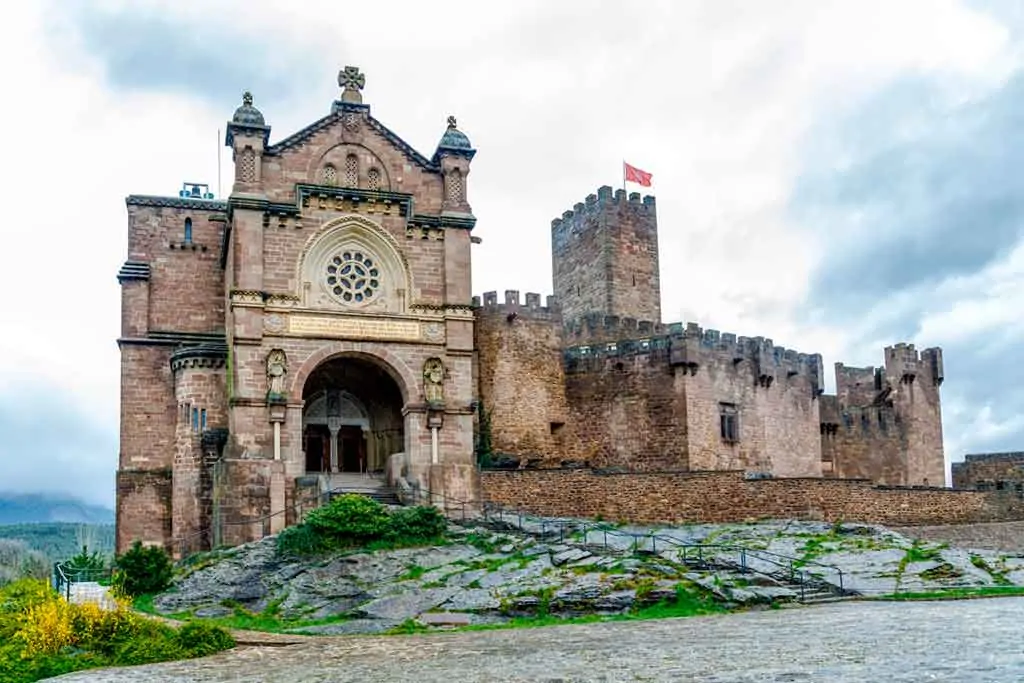
The birthplace and childhood home of Saint Francis Xavier, this castle, with its crenelated towers and drawbridge, is a place of mass pilgrimage in March when people visit in honor of the patron saint of Navarre.
Step inside to learn about Francis Xavier, the man who co-founded the Society of Jesus (Jesuits) and became one of the universal missionaries.
Where: Javier, Navarre
When: 10th century
Open for visit: Yes. Check here for more information.
13. Castle of Zafra

Built upon a rock, the remote Castle of Zafra was originally built as an Arab fortress and has been used by the Celtiberians, Romans, and Visigoths over the centuries, becoming an important stronghold.
If the castle somehow looks familiar to you, it’s because it featured as ‘The Tower of Joy’ in Game of Thrones season 6, episode 3.
Where: Campillo de Dueñas, Guadalajara
When: 12th century
Open for visit: Yes, exterior only.
14. Coca Castle

Combining Gothic and Moorish architecture, Coca Castle is considered to be the best example of Spanish Mudejar brickwork in the country and one of the most beautiful in Europe.
Located in the picturesque walled town of Coca, the castle has 2 square baileys, polygonal towers, and a dry moat. Today, the castle is used as a training center for foresters, but guided tours inside the castle are available.
Where: Coca, Segovia
When: 15th century
Open for visit: Yes. Check here for more information.
15. New Castle of Manzanares el Real

The best-preserved palace-fortress in Madrid, which is also known as the Castle of the Mendoza, allows visitors to step back in time on a dramatized visit that takes them through the castle halls and rooms to meet Mr. Pedro de Zuñiga y Salcedo and Ms. Isabel Asensio, two 17th century characters who help bring the castle history to life.
Where: Manzanares el Real, Madrid
When: 15th century
Open for visit: Yes. Click here for more information.
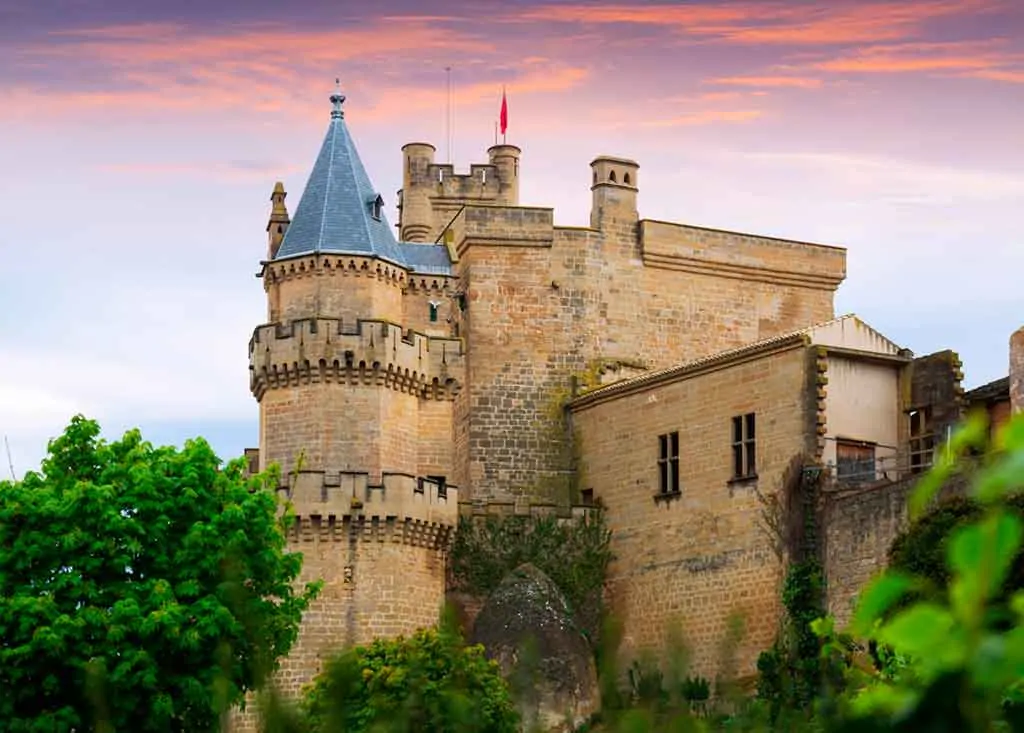
This luxurious Medieval Royal castle-palace (otherwise known as the Royal Palace of Olite) was once the seat of the Courts of the Kingdom of Navarre until 1512 when the Union of Castile took place, and it became a palace.
Choose from a general, family, or dramatized tour as you step inside to learn the history and admire the architecture of this stunningly beautiful palace, or treat yourself and spend the night at the castle is a Parador Hotel too.
Where: Olite, Navarra
When: 13th century
Open for visit: Yes. Check here for more information.
17. Penafiel Castle
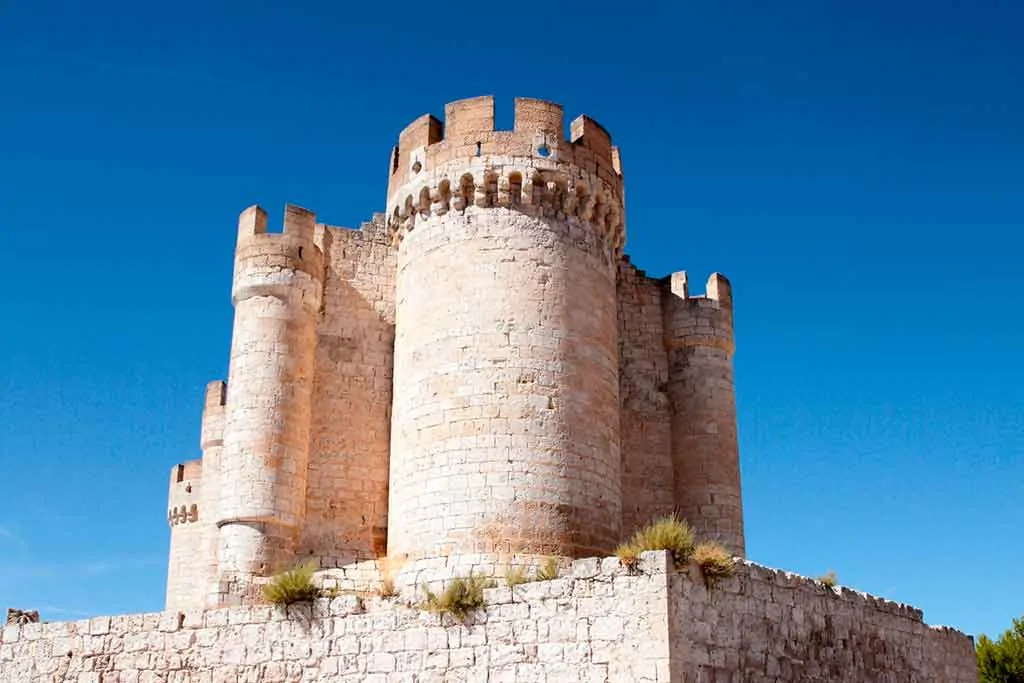
This clifftop castle began as a frontier outpost in defense against the Arabs but is today home of the Provincial Museum-Foundation of the Wines of Valladolid.
Due to its location, it has been built as a very narrow-walled precinct measuring almost 600 feet long. Step inside on a guided tour (Spanish only) to admire the eight towers and two courtyards before learning about the wines local to this region at the museum.
Where: Peñafiel, Valladolid
When: 10th-15th century
Open for visit: Yes. Click here for more information.
18. Simancas Castle
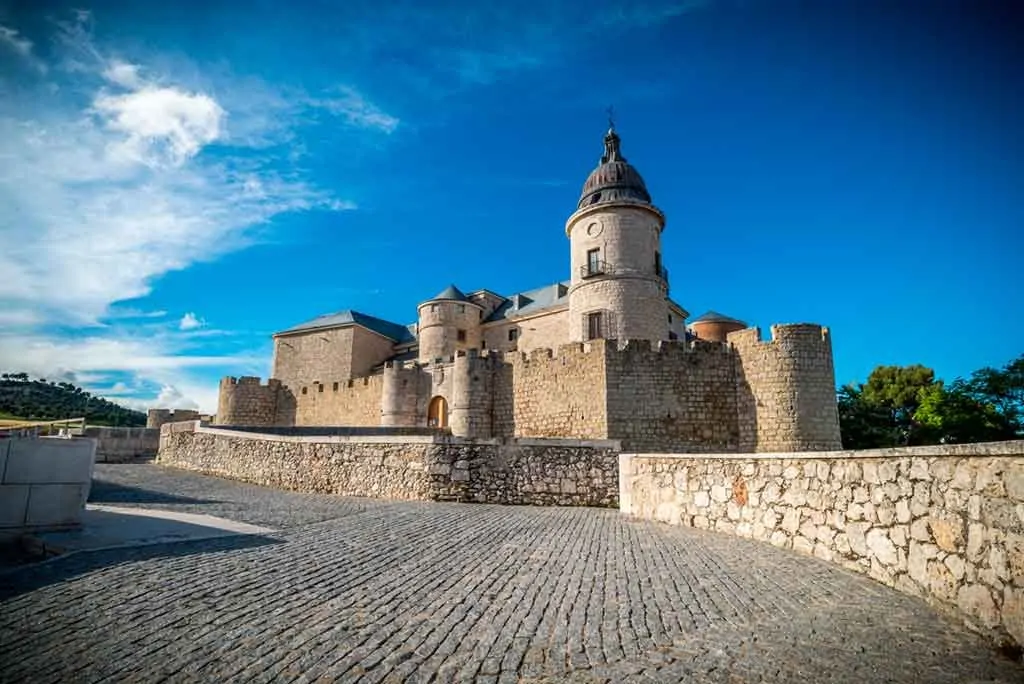
This fortified complex, used by both Muslims and Christians, stands in the middle of the town on the bank of the river Pisuerga.
Built by the Admirals of Castile, today, the castle is used to house the General Archives of Simancas containing documents referring to monarchic rights and imperial administration plus state documents.
Where: Simancas, Valladolid
When: 15th century
Open for visit: Yes. Check here for more information.
19. Alcazaba of Almeria
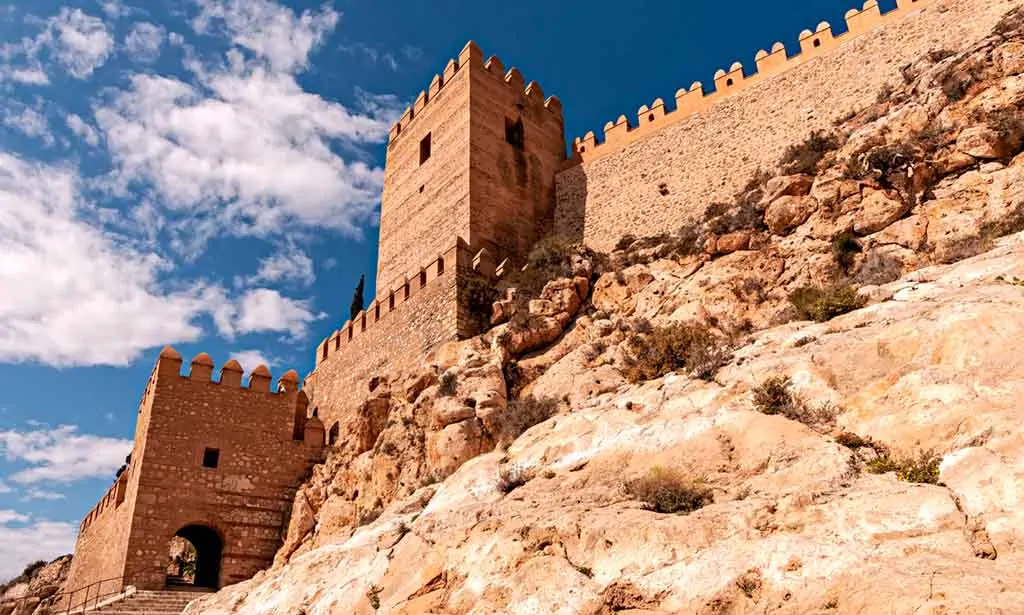
This walled fortification, which was once a royal residence, is the largest Muslim (Moorish) citadel in Spain and the largest Caliphate fortress in all of Europe.
It features three walled enclosures, 2 Islamic and 1 of which was built by the Catholic Monarchs. Take a tour through the large rooms with vaulted ceilings and gothic doors, see the remains of the Arab baths, and admire the gardens.
Where: Almeria
When: 11th century
Open for visit: Yes. Check here for more information.
Click here to book your guided tour of the Alcazaba of Almeria.
20. Alcazaba of Antequera
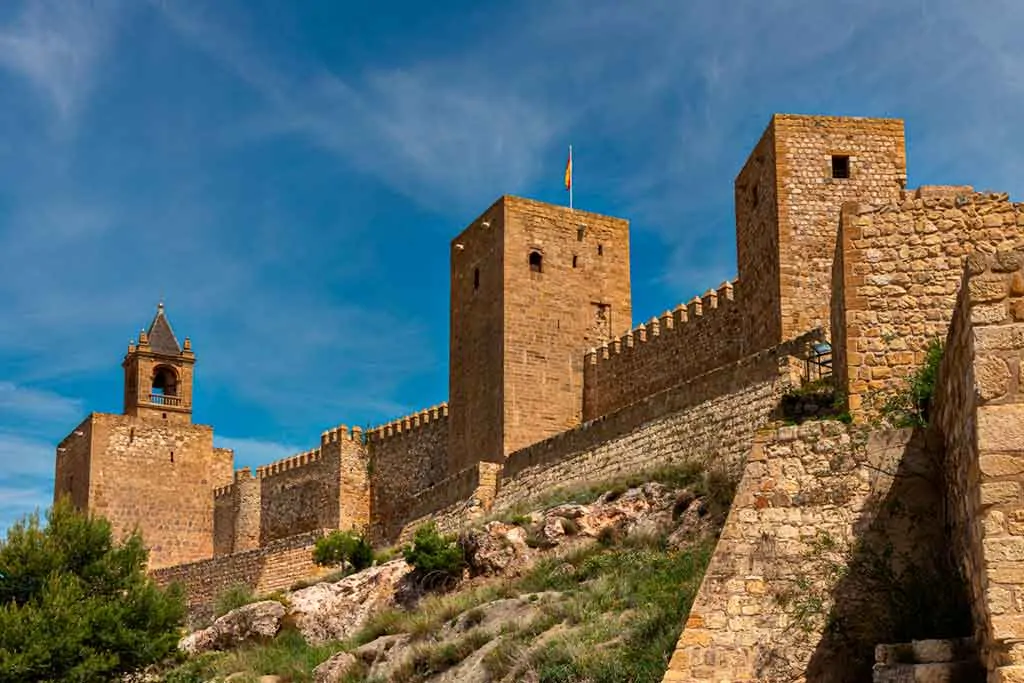
Built upon the ruins of an ancient Roman citadel by the Moors to counter the Christian advance from the North, the Alcazaba of Antequera has existed for more than 8,000 years.
Step inside the large fortified complex, which includes 2 streets and a church, to admire the large keep, gardens, panoramic views, and the few remaining interior walls.
Where: Antequera, Malaga
When: 14th century
Open for visit: Yes. Check here for more information.
21. Alcazaba of Malaga
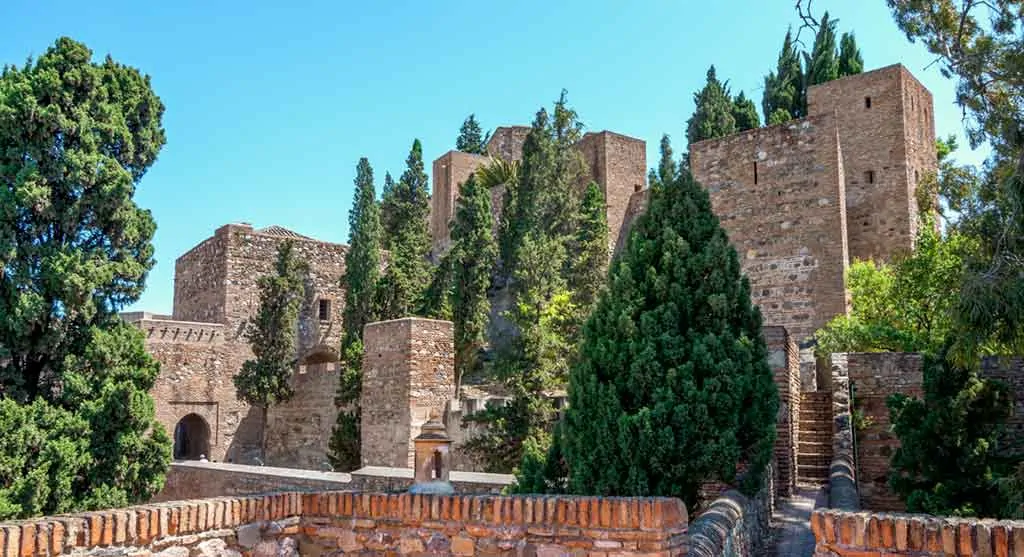
This palatial fortification of the city’s governing Muslims is the best-preserved Alcazaba (Arabic citadel) in Spain and combines Roman, Arabic, and Renaissance architecture within a few meters of each other thanks to the remains of a Roman Theatre and the Aduana Customs Building.
Where: Malaga
When: 11th century
Open for visit: Yes. Check here for more information.
Click here to book your guided tour of the Roman Theatre and the Alcazaba of Malaga.
22. Alcazar of Jerez de la Frontera

This Moorish Alcazar is the oldest building in the city and is one of the few remaining examples of Almohad architecture in the area.
During its time, it formed a complex defense system with visitors able to see the walls, gates, and towers (one being an octagon) along with the mosque-turned-chapel, Islamic-style gardens with fountains and arches, and Arab baths.
Where: Jerez de la Frontera, Cadiz
When: 11th-12th century
Open for visit: Yes. Check here for more information.
23. Alcazar of Seville
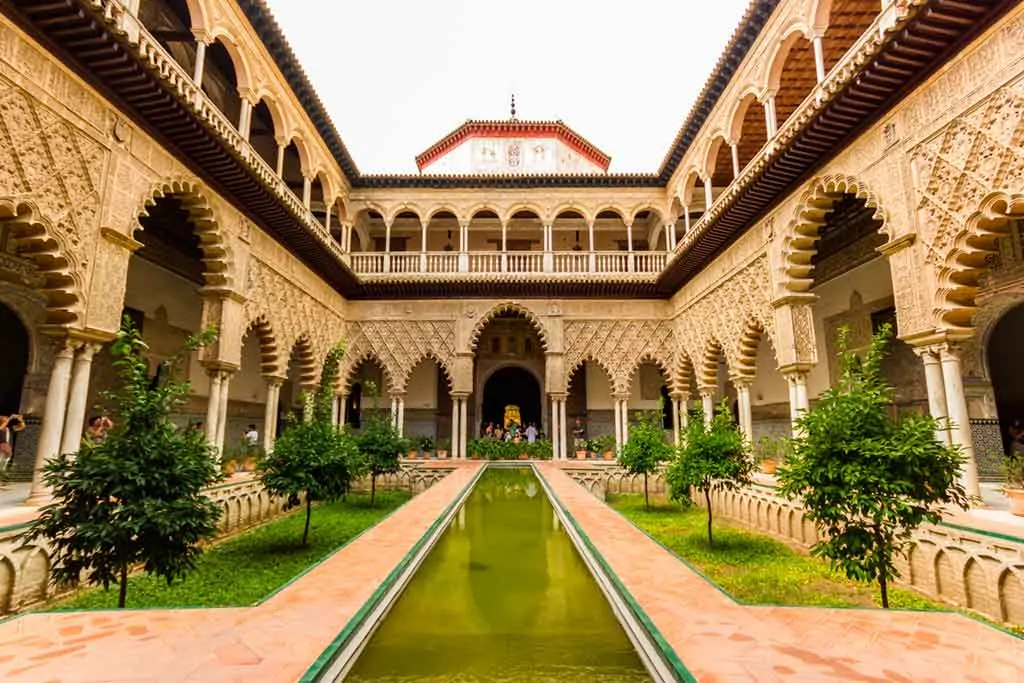
This Royal Palace-Fortress was built by the Castilian Christians on the site of an older Muslim residential fortress and is still in operation as a palace today, making it one of the oldest working palaces in the world and a cultural hot pot when it comes to architectural styles.
Where: Seville
When: 11th century
Open for visit: Yes. Check here for more information.
Please note lines are huge at the Alcazar of Seville, and booking a skip-the-line ticket or a guided tour is recommended.
Click here to book your skip the line ticket to the Alcazar of Seville.
Alternatively, book here your Alcázar Guided Tour with Priority Entrance.
24. Alcazar of Toledo
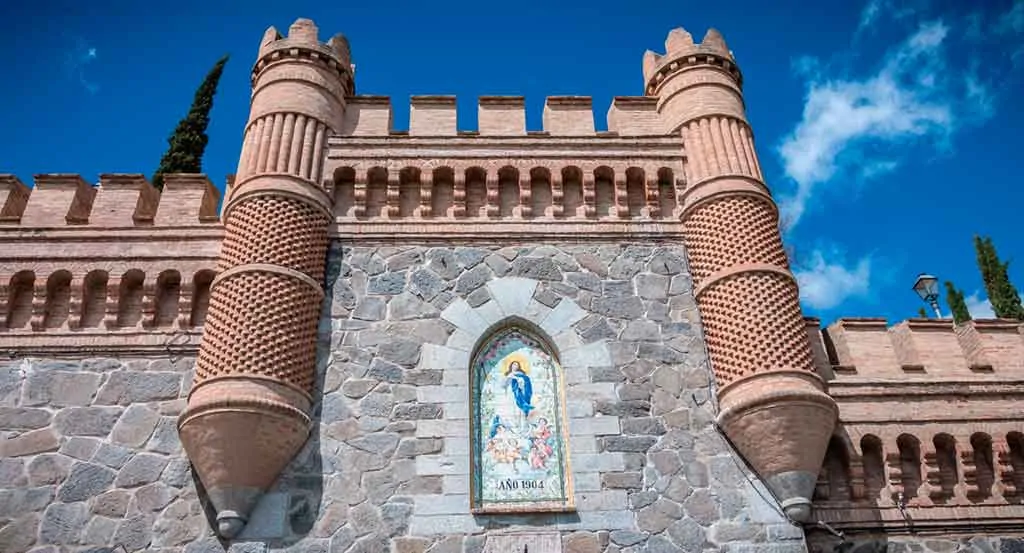
Originally a Roman palace in the 3rd century, the Alcazar of Toledo became a symbol for the Spanish Nationalism after the siege of the Alcazar during the Spanish Civil War. It has since been rebuilt, being the first square fortress with corner towers, and today contains the Museum of the Army and the Regional Library.
Where: Toledo
When: 16th century
Open for visit: Yes. Check here for more information.
Click here to book your guided visit to the Alcazar of Toledo.
25. Ampudia Castle

The best-preserved castle in the region, Ampudia Castle is actually a restored medieval fortress that contains the Eugenio Fontaneda Collection.
Take a guided tour through the 7 parts of the castle as you see the Archaeology Room, the Sacred Art Room, the Hall of Arms, the Pharmacy, the Room of Toys, the Courtyard and more whilst learning the history and stories of the castle from your guide.
Where: Ampudia, Palencia
When: 15th century
Open for visit: Yes. check here for more information.
26. Bellver Castle
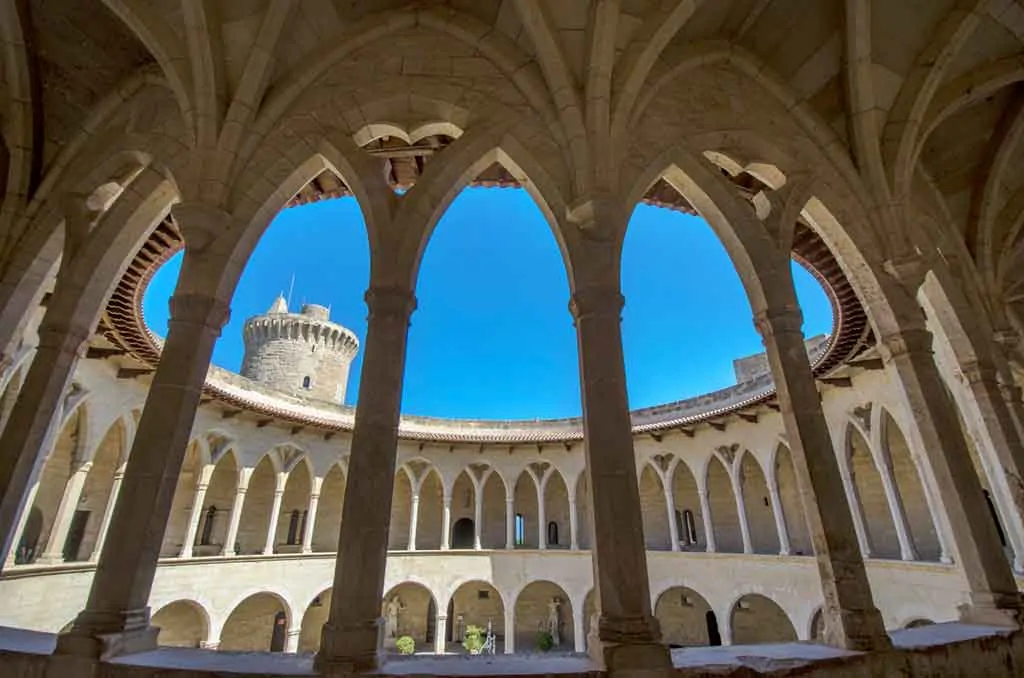
This unique circular castle, with its three towers, central courtyard, and free-standing keep, was used as a royal fortress as well as a prison.
Overlooking the city of Palma from its hilltop location, the 700-year-old castle is surrounded by fragrant pine trees and overlooks the city of Palma. Today it houses the museum of municipal history.
Where: Palma, Majorca
When: 14th century
Open for visit: Yes. Check here for more information.
27. Castelldefels Castle
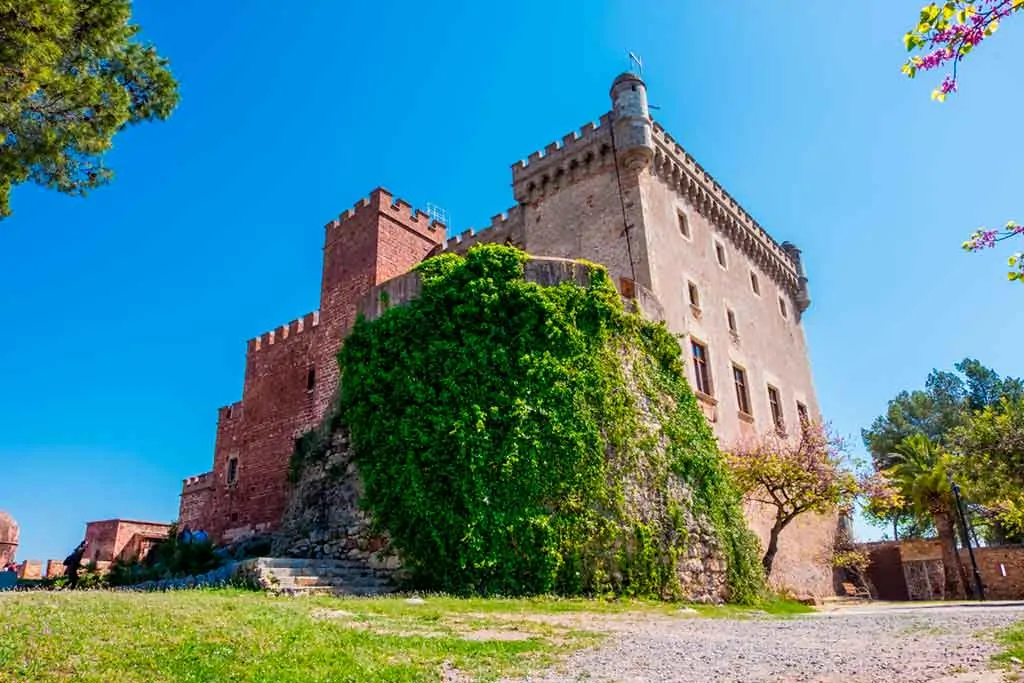
This frontier fortress, built on Roman ruins, dominated the surrounding coastal landscape and was built as a defensive stronghold against Arab invasions, later defending against Barbary pirate attacks.
During the Spanish Civil War, it was used as a disciplinary prison camp. Today visitors can explore inside the refurbished castle.
Where: Castelldefels, Barcelona
When: 16th century
Open for visit: Yes, check here for more information.
28. Castillo de Almodovar del Rio
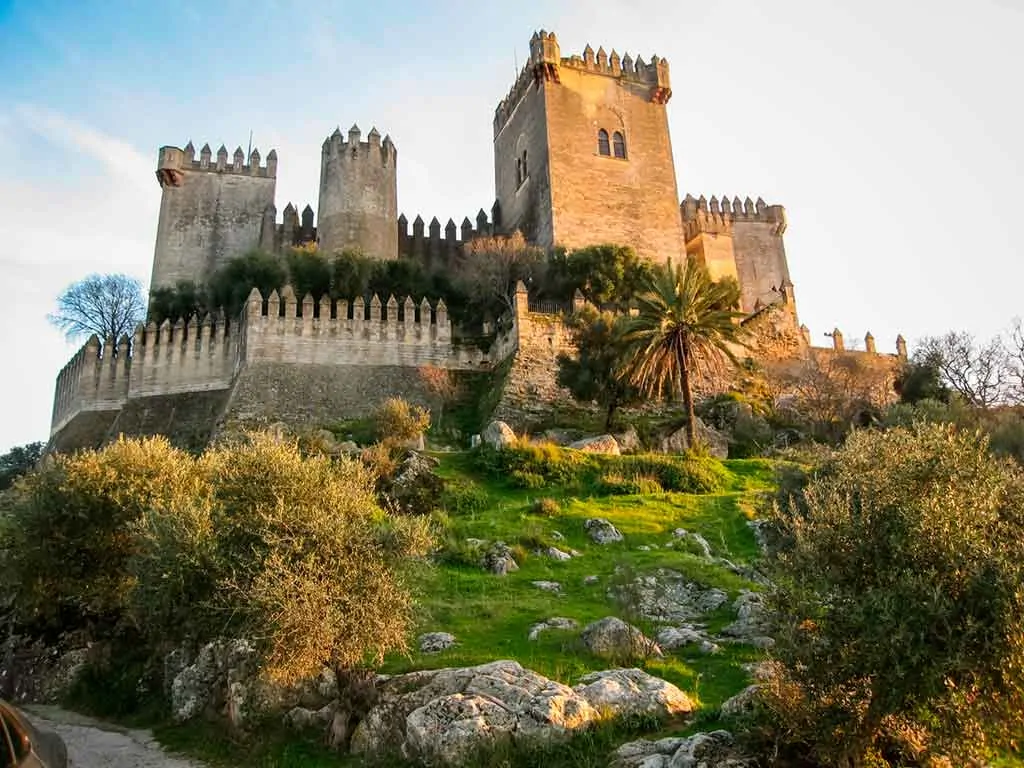
Originally a Roman fort, the impressive Almodovar Castle, with its nine towers, was rebuilt in the Moorish Berber style when it became an Arab royal residence.
The castle became famous after it was used in Game of Thrones to film the Highgarden scenes, the seat House Tyrell and visitors today can take a guided tour or explore at their own pace.
Where: Almodóvar del Río, Cordoba
When: 14th century
Open for visit: Yes. Check here for more information.
Click here to buy your skip the line tickets to Almodovar Castle.
29. Castillo de Arteaga

This historic castle, otherwise known as the Castillo de la Emperatriz Eugenia de Montijo, has been designated a Basque Heritage building and is now a 4-star hotel and wedding venue with an on-site restaurant and winery.
Where: Arteaga, Bilbao
When: 13th century
Open for visit: Only for guests staying at the hotel or visiting the restaurant/winery.
30. Castillo de Belalcazar

The remains of this beautiful palace-fortress (otherwise known as Castillo de Gahete or Castillo de Gafiq or the Sotomayor and Zúñiga) are made up of two parts, the Moorish outer enclosure and the inner castle of the Sotomayor.
Very little remains of the interior ruins apart from the dungeons and stables and a partial staircase.
Where: Belalcazar, Cordoba
When: 15th century
Open for visit: No – Permanently closed though you can view the exterior.
31. Castillo de Burgalimar / Castillo de los Baños

Otherwise known as Bury al-Hammam castle, this caliphal military fortress with its 15 towers (14 rectangular and one pentagonal) is one of the best-preserved Muslim/Moorish fortresses in Europe, having near original enclosures that have been altered very little since Christian times.
Where: Baños de la Encina, Jaen
When: 10th century
Open for visit: Yes. Check here for more information.
32. Castillo de Colomares
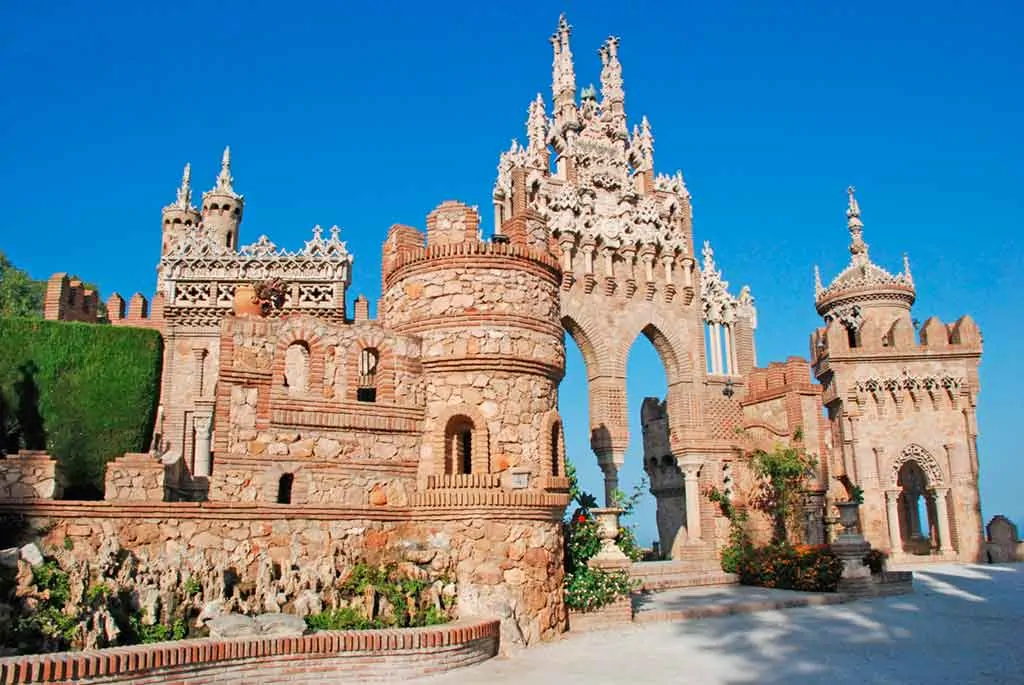
This stunning fairytale-like castle is actually a monument dedicated to the life and travel adventures of Christopher Columbus. Built between 1987-1994 for a U.S. medical practitioner by two local builders, Colomares Castle pays homage to the great explorer and his discovery of the Americas.
Where: Benalmádena, Malaga
When: 20th century
Open for visit: Yes. Check here for more information.
33. Castillo de Trujillo

This Moorish stone defense fortress is made up of two parts, the Patio de Armas (parade ground) and the Albacara. Built on an old Arab citadel, the dominating Trujillo Castle has square towers and a horseshoe arch above the door.
Despite being strengthened by the Christians, the castle still retains many Moorish remains, including its seven gates.
Where: Trujillo, Caceres
When: 9th / 13th century
Open for visit: Yes. Check here for more information.
34. Castle of Biar

Built by the Moors, Biar Castle is a frontier castle that was enlarged and reinforced by the Christians from the time of the Spanish Conquest.
Of architectural interest due to its Hispanic-Arab influences, the castle boasts a traditional Almohad ribbed vault which is the oldest one to exist in Spanish military architecture to this day.
Where: Biar, Alicante
When: 12th century
Open for visit: Yes. Check here for more information.
35. Castle of Loarre
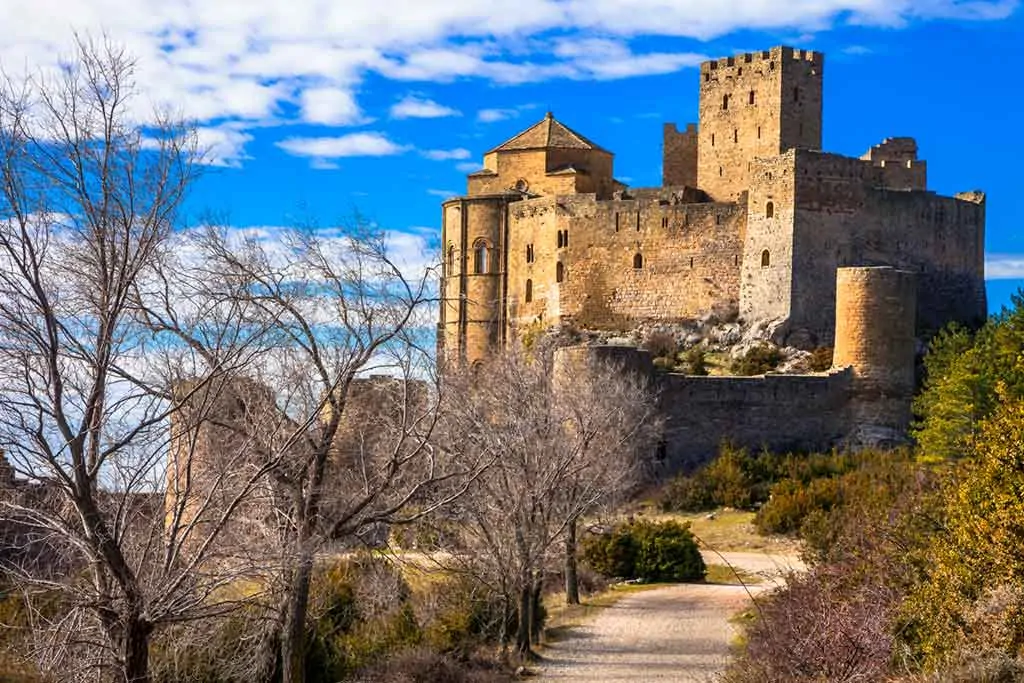
This partially ruined fortified castle is one of the oldest in Spain. With archaeological evidence dating back to Iberian and Roman times, the building seen today is from the 11th century and consists of 2 parts; the castle with a walled enclosure and the attached Romanesque monastery with preserved church and crypt.
Where: Loarre, Huesca
When: 11th century
Open for visit: Yes. Check here for more information.
36. Castle of Molina de Aragon

Occupied since Celtiberian times with the Moors building the first fortress here, the castle was later fought over by the kingdoms Aragon and Castile. Despite starting out as a military fortress, the castle was also used as a place of residence by the lords of the taifa of Molina.
Where: Molina de Aragon, Guadalajara
When: 10th century
Open for visit: Yes, check here for more information.
37. Castle of San Marcos
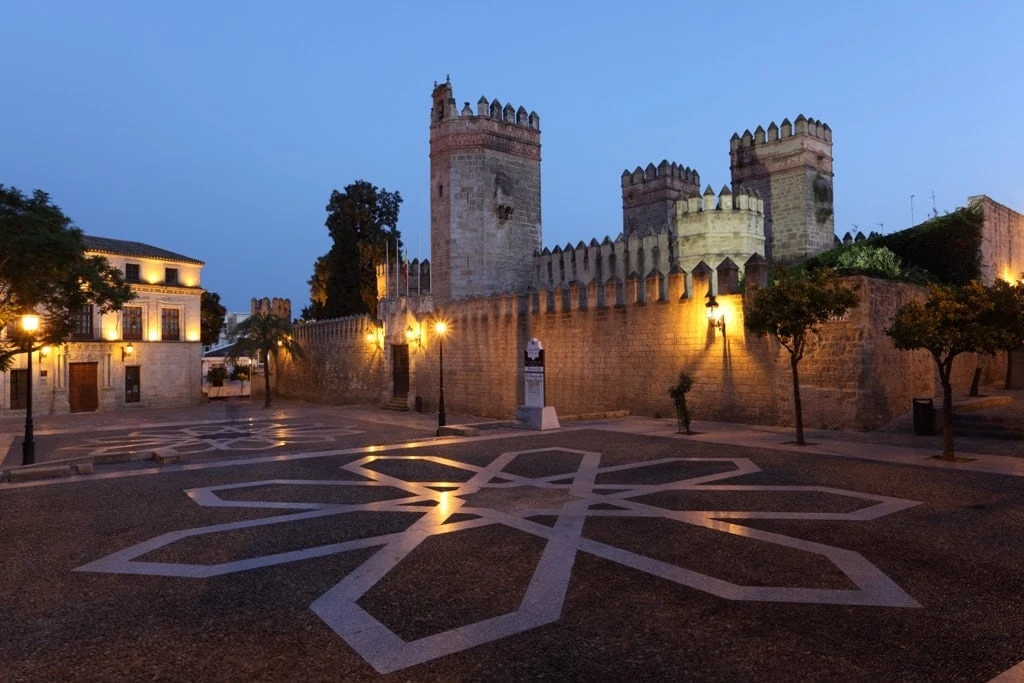
This 800-year-old castle with its battlements and towers plus mihrab (Muslim prayer tower) was originally a fortified church built on the site of an older mosque on the banks of the Guadalete River. The castle is perfectly preserved and is used as an event venue today, but you can still see it inside on a guided tour.
Where: El Puerto de Santa María, Cádiz
When: 12th century
Open for visit: Yes. Check here for more information.
38. Castle of Siguenza
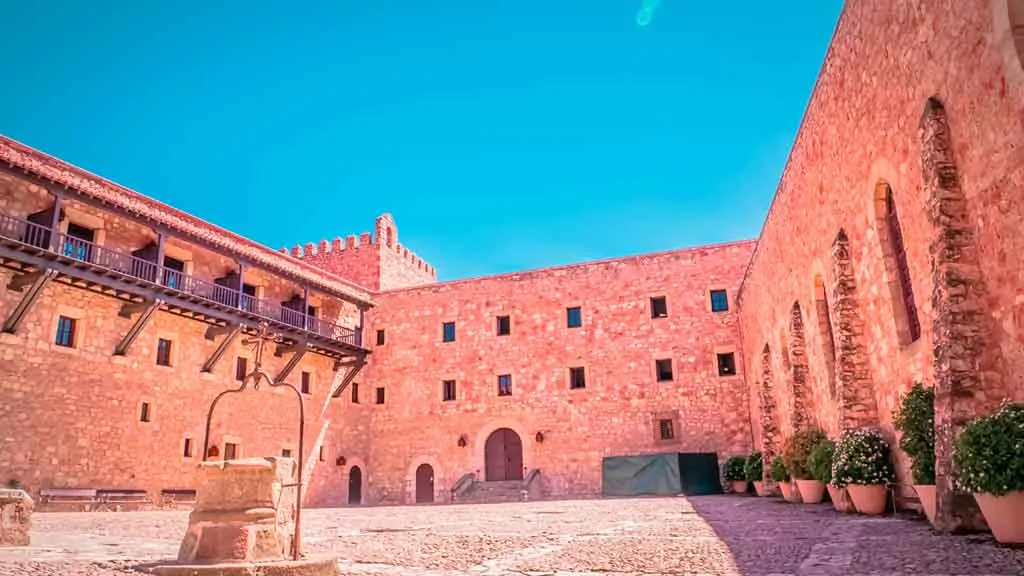
The Castle of the Bishops of Siguenza dates back to the 5th century when it was an Arab citadel though the palace-fortress seen today is from the 12th century. Having been used as a palace for Bishops and headquarters for the Guardia Civil, today, the Castle is a Parador Hotel.
Where: Siguenza, Guadalajara
When: 12th century
Open for visit: Yes, Some areas, others are only for hotel guests.
39. Jarandilla Castle
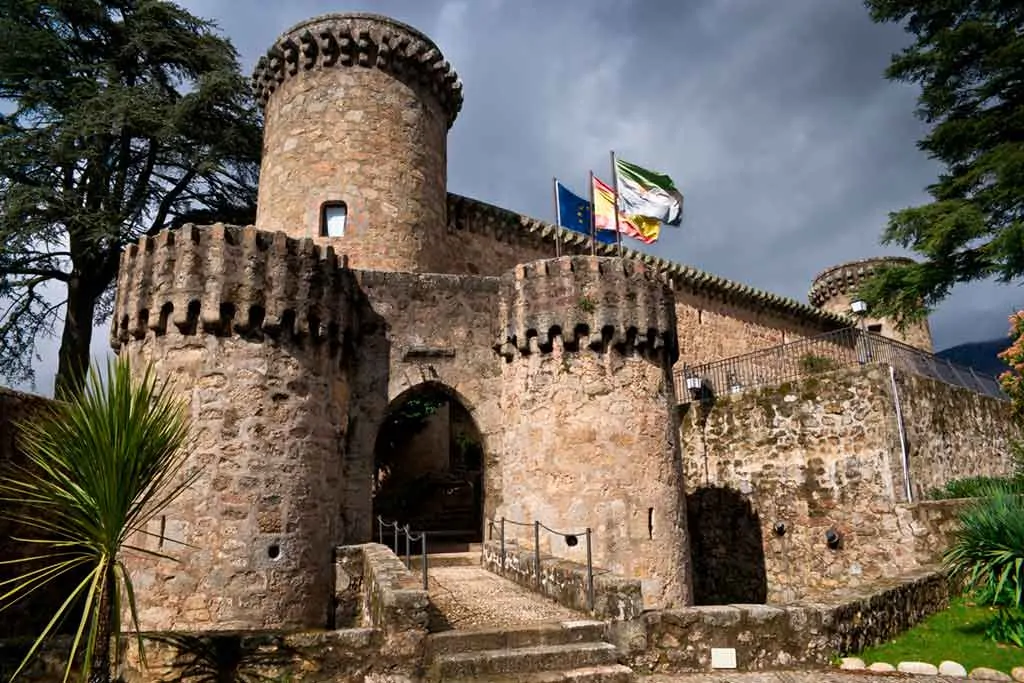
This large rectangular castle, complete with a drawbridge is also known as the Castle of Carlos due to Emperor Carlos V having stayed at the castle whilst his palace-house was being built at Yuste. Today the castle is a Parador hotel where guests can admire the Gothic gallery, towers, and patios.
Where: Jarandilla de la Vera, Caceres
When: 13th century
Open for visit: Hotel guest access only.
40. Castillo de La Mota
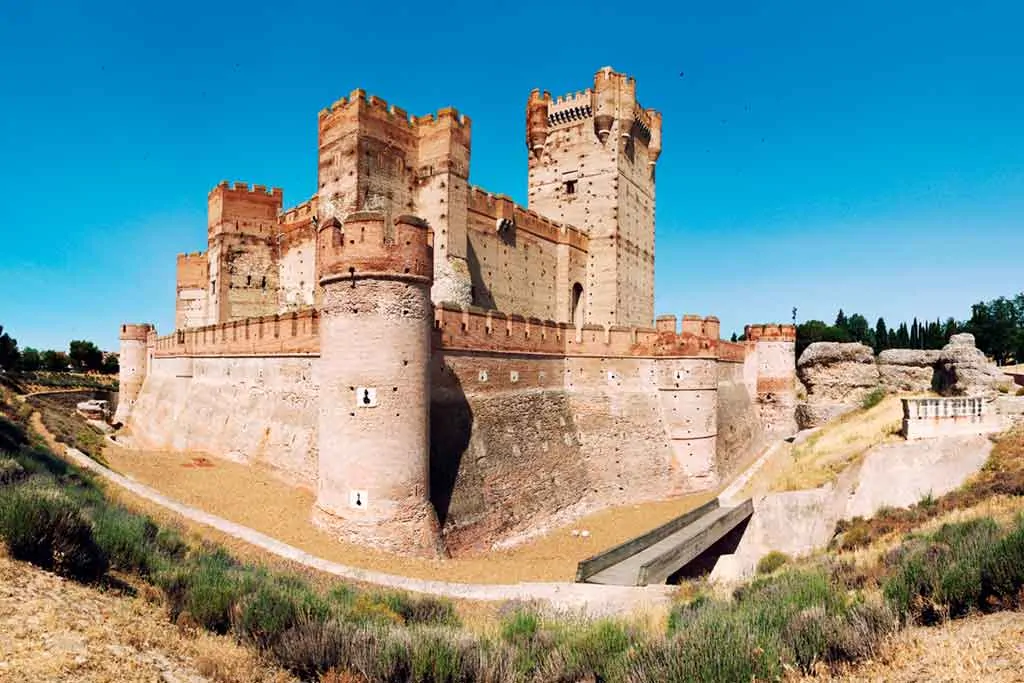
Built on Moorish foundations, the restored fortress that we see today was built on the orders of Juan II, King of Castile, and added to by Queen Isabel, one of the Catholic Monarchs, before being turned into a state prison that detained Cesare Borgia amongst other notable medieval people. Today it is used for cultural events and activities.
Where: Medina del Campo, Valladolid
When: 12th century
Open for visit: Yes. Check here for more information.
41. Ponferrada Castle

Otherwise known as Castillo de los Templarios (The Templars Castle), this huge castle-fortress, polygonal in shape and with double and even triple defenses, was constructed by the Knights Templar so as to protect pilgrims walking the Camino de Santiago.
Enjoy the views as you walk the parapets and learn the history of this castle that also houses the Templars Library.
Where: Ponferrada, Leon
When: 12th century
Open for visit: Yes. Check here for more information.
42. Castillo de Tossa de Mar

A castle full of enchanting courtyards and towers that overlooks the sea, Castillo de Tossa de Mar is one of Girona’s most iconic and beautiful castles. As the only fortified medieval town that exists on the Catalan coast today, the castle played a defensive role in protecting the town from pirate attacks.
Where: Tossa de Mar, Gerona
When: 12th century
Open for visit: Yes. Always open.
FAQs about The Best Castles in Spain
There are many famous castles to visit in Spain. Among the best castles in Spain are the famous Alhambra de Granada, the Alcazar de los Reyes Cristianos, Alcazar of Segovia, Aljaferia Palace, Coca Castle, Alcazar of Seville, and the Castillo de Tossa de Mar.
The Alhambra is not only the most famous but also the most beautiful castle in Spain. The palace complex offers breathtaking Moorish architecture and stunning courtyards.
The Castillo de Baños is the oldest castle in Spain. The castle was built in 968 AD and is located in the Jaén town of Baños de la Encina.
